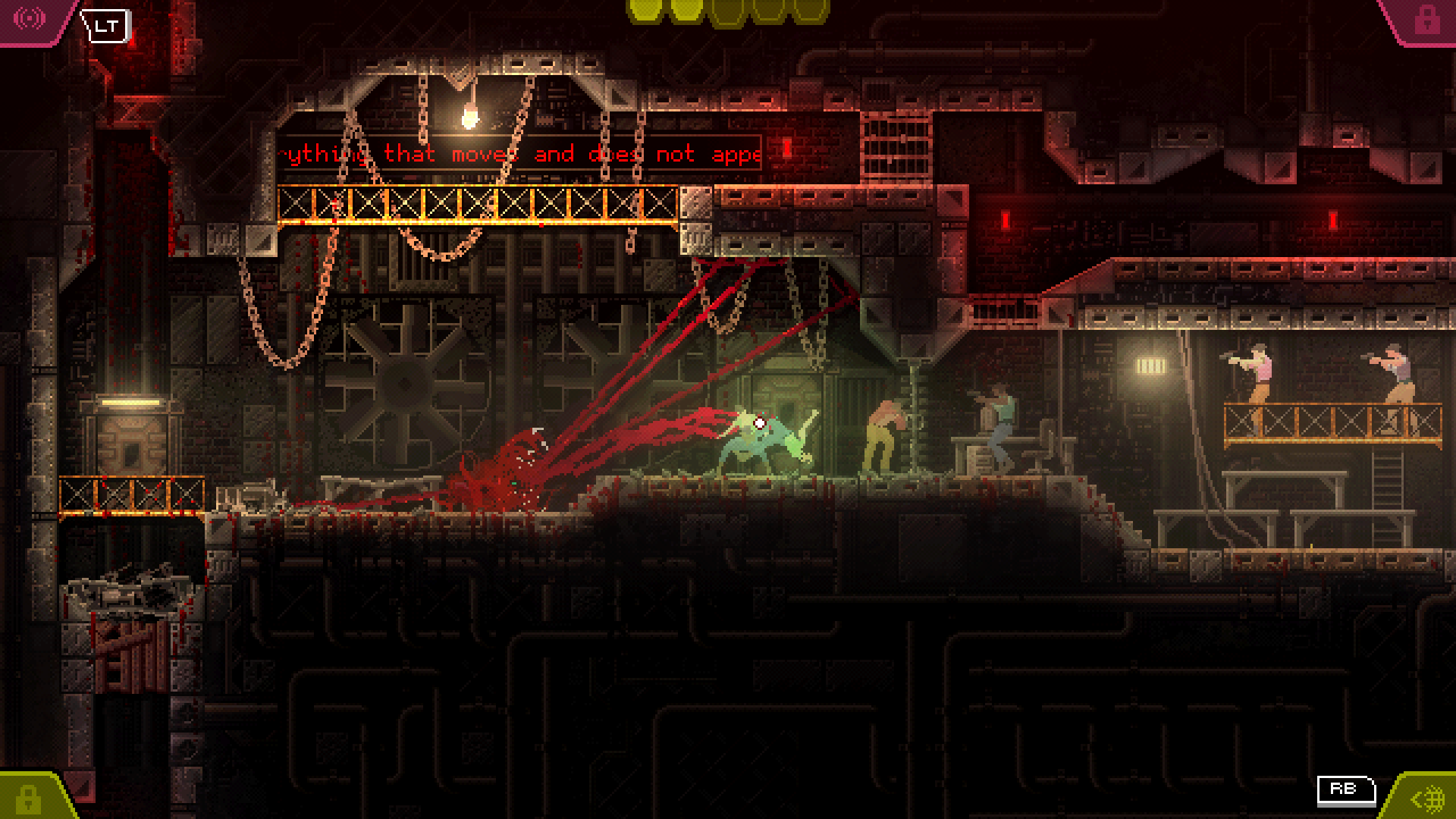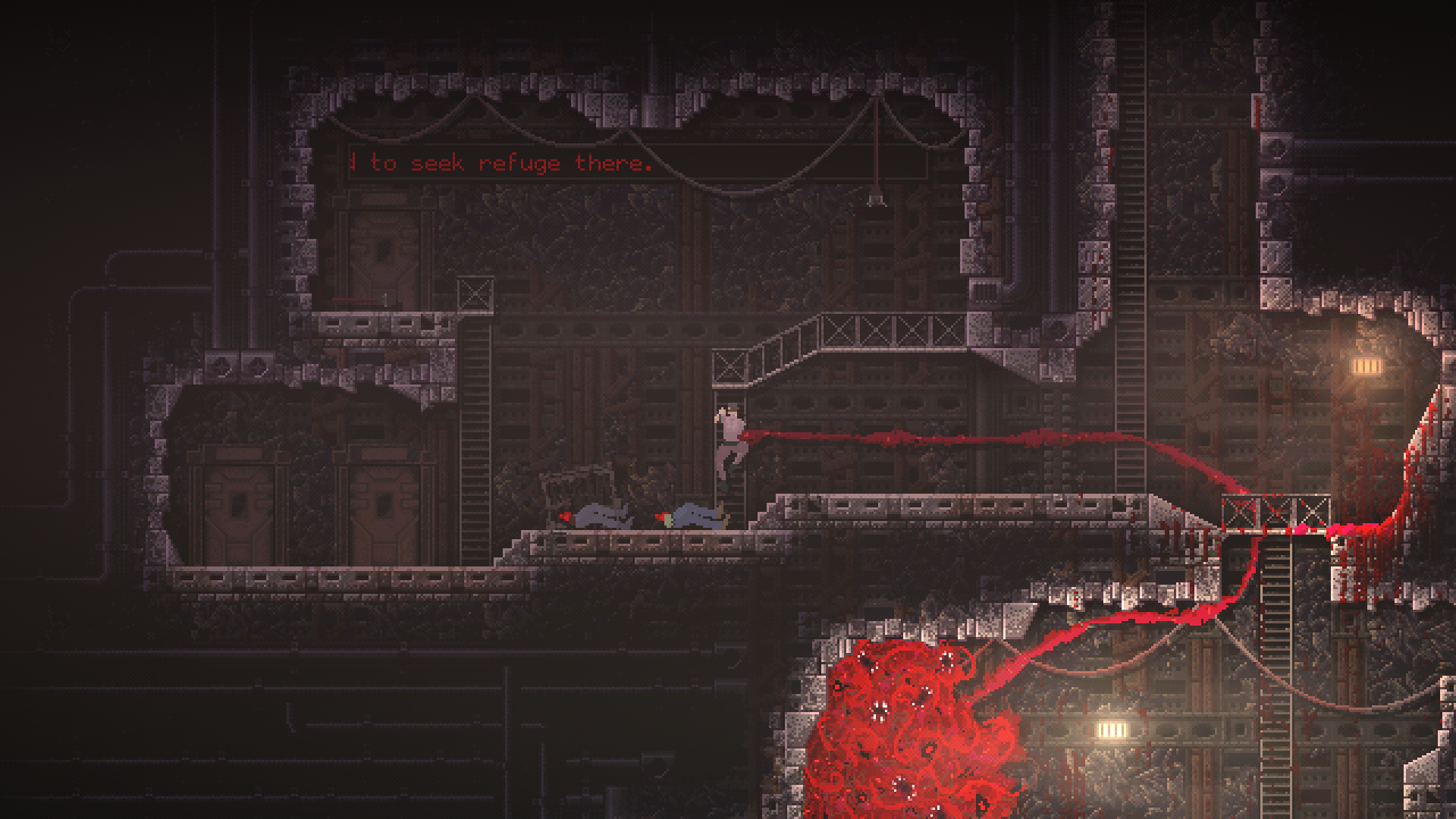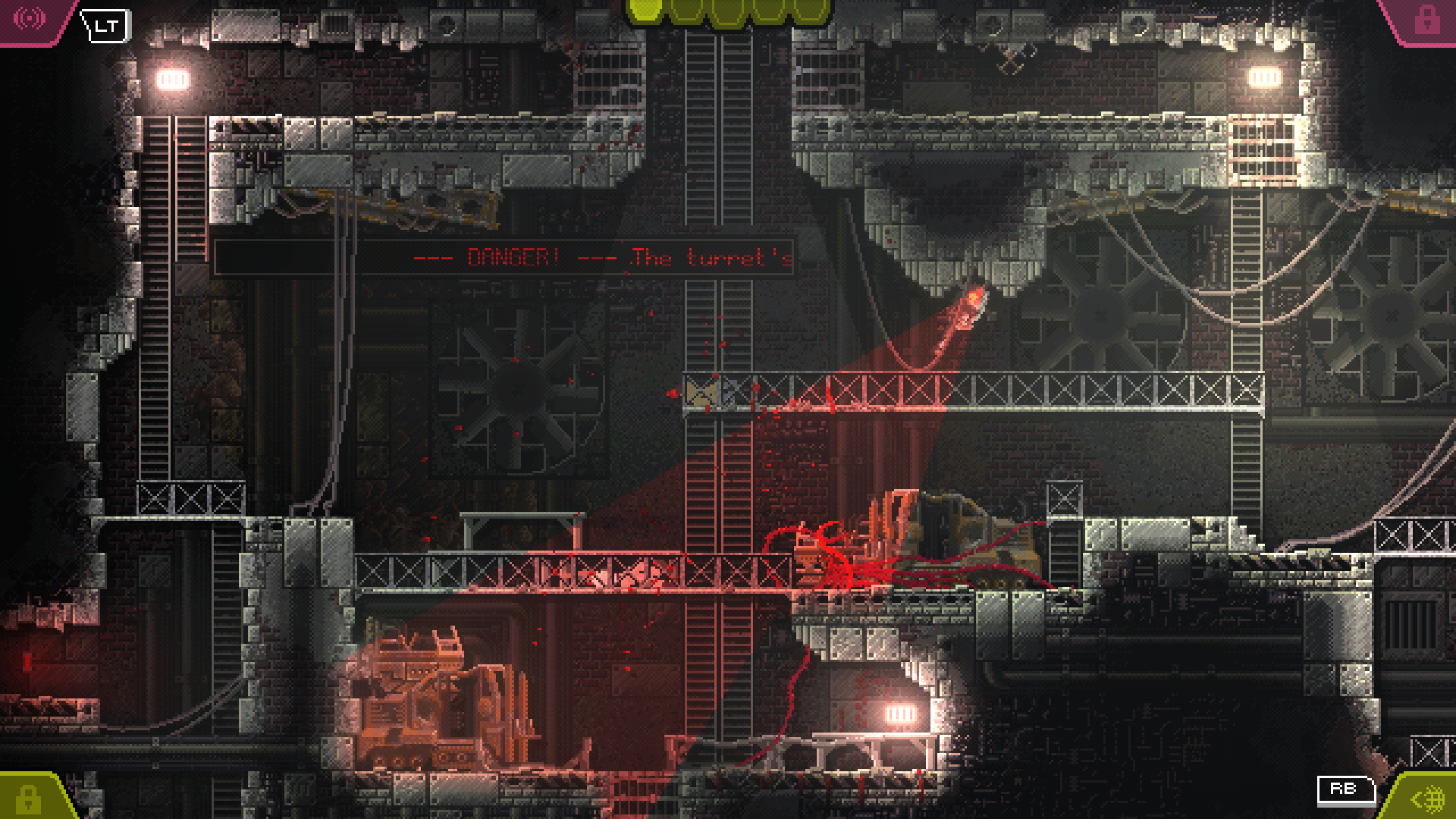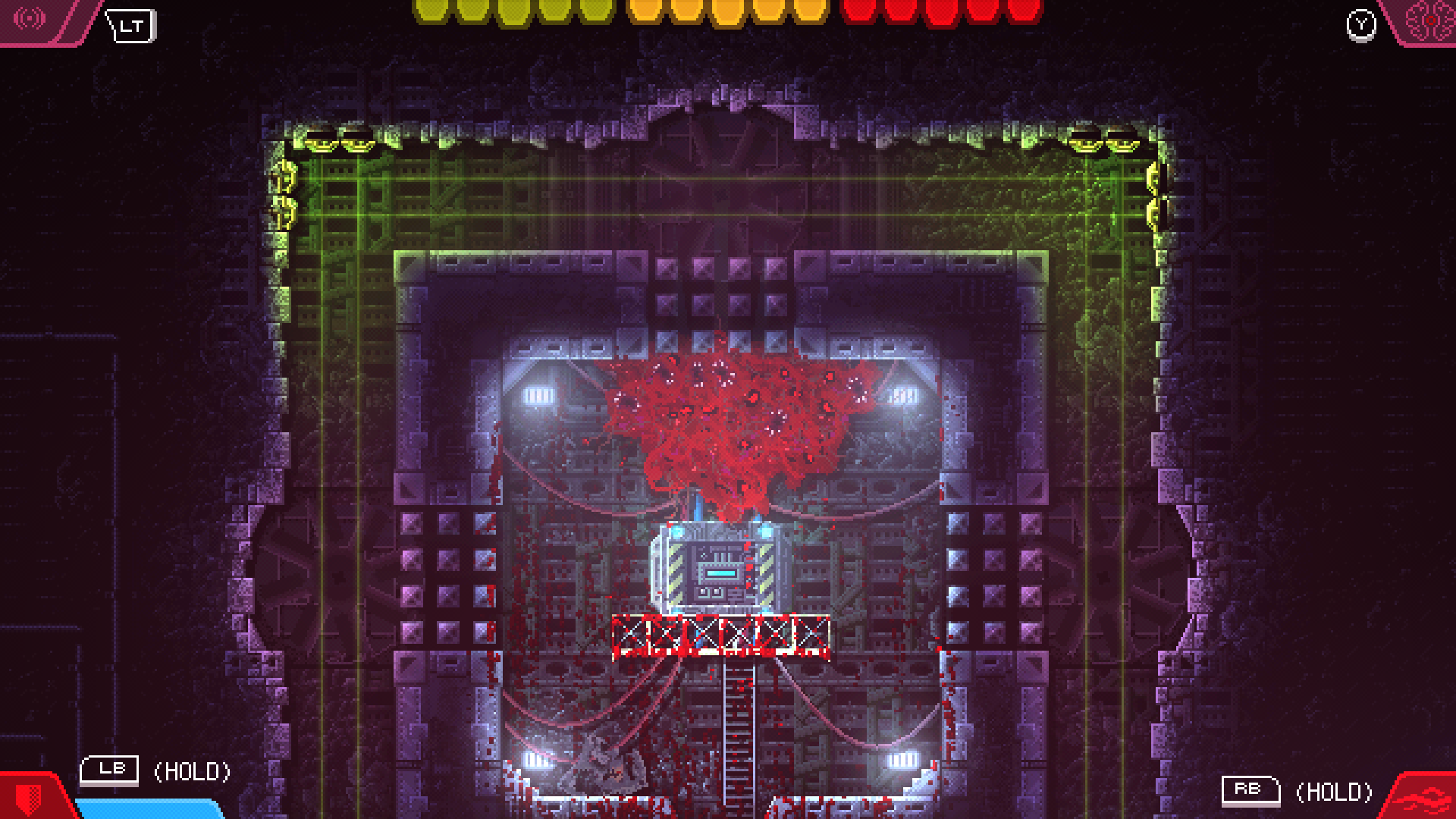Our Verdict
Carrion is a fun reverse-horror adventure, though it doesn't push the concept to the heights of its potential.
PC Gamer's got your back
What is it? 2D Metroidvania action game in which you escape a facility as formless monster.
Reviewed on: Windows 10, AMD Ryzen 7 1700, 16GB RAM, Radeon RX480
Price: $20/£17
Release date: Out now
Publisher: Devolver Digital
Developer: Phobia Game Studio
Multiplayer: None
Link: Official site
John Carpenter's The Thing, the 1980s horror classic about Antarctic researchers stuck inside a base with a monster trying to assimilate, imitate, and murder them, revels in paranoia. The movie’s characters do not know who among them might be the titular Thing or where it disappears to when it escapes, so the conflict with the creature becomes an internal conflict. Entertainment has mined this idea so thoroughly that, as I experienced the perspective of a vicious monster acting on instinct in the opening moments of Carrion, I found a sense of calm in the simple and relatable motivations of merely wanting to consume and escape.
There is no overwrought origin story, no scientist narrating the truth depths of danger that the seemingly underground laboratory now finds itself in. People are running, the monster eats those people, the monster really does not like getting shot so it should probably eat people before they shoot. This is Carrion’s tutorial sequence, introducing the player to the smooth controls which allow them to traverse a dank underground laboratory by attaching tentacles to every surface with no interference or complication. The monster moves in the direction it's told, evoking a feeling of flight as it slithers around the room and along the tops of ceilings.

It’s with that same gusto that Carrion pursues all its systems. The game is a Metroidvania in concept, but the espresso shot version of one, without offering much of the way in actual exploration. You move the monster throughout the base, seeking simply to get outside, growing larger by absorbing biomass (eating people) and then distributing that biomass into holes in the wall to spread through the laboratory. Doing so opens up new paths and crucial progress doors that lead to new areas, and is also surprisingly gross.
It is very rare not to know exactly where to go next for progress, though the times I did get lost were aggravating due to the lack of any sort of map. The labyrinthian maze of one-way drain pipes makes these instances more annoying than they need to be and, for a game so heavily dependent on backtracking, its five-hour runtime feels short.
The puzzles themselves are solved quickly and do not require much in execution, but can sometimes be a little frustrating. In one situation, I killed a piece I needed to solve the puzzle and had to restart at a previous checkpoint. In another, I am positive I solved it using an unintended method and spent minutes in fear that I had broken progression and would have to restart. Perhaps most annoyingly, the checkpoints only exist in certain rooms, and a far-off combat encounter forced me to execute puzzles I had solved again and again to get back to where I died.

Humans are the only enemies, and they either run from the monster or try to fight back, the latter behavior providing most of the conflict in the game. After its wild beginnings, which are all about fast movement and carnage, Carrion transforms into a reverse-survival horror scenario. The monster can scare enemies by growing, knocking out vents to distract them, then grabbing for them with tentacles when they aren’t looking. These combat scenarios get harder as time goes on, but Carrion stops short of ever making them frustrating for a patient player.
While the monster does gain powers over time, few truly change things up in terms of traversal and are more often essentially just keys to subvert different types of doors and obstacles. The ability to take over human hosts is an interesting idea, but is used in surprisingly few non-elective situations. As the monster’s mass grows and it achieves the shape and form of a giant flesh tube, it becomes somewhat unwieldy to control. I stopped being able to consistently discern which end was going to move forward or backward in contrast to the smaller forms’ quicker and more lithe movement.

Carrion is utterly disgusting to look at in mostly intended ways that manage to be captivating. Watching the monster, a mass of flesh, eyes, and mouths twist around corners and slip through small openings is nearly enough to make me retch, but it’s utterly entrancing. Rooms quickly become covered in blood and viscera, which is a neat effect, but sometimes obscured the pipe I was looking for.
While I might disagree with the notion that Carrion is a truly great Metroidvania, a genre that has buckets of both older and modern classics, it is at very least a refreshing take on it. It controls like a dream with an analog stick, and there's a fluidity to the monster’s movements that I honestly feel like I will be searching for in other games for years. It just falls short of greatness, settling quickly into its comfort zone as a series of interconnected puzzles, and then failing to surprise me much after that
Carrion is a fun reverse-horror adventure, though it doesn't push the concept to the heights of its potential.


